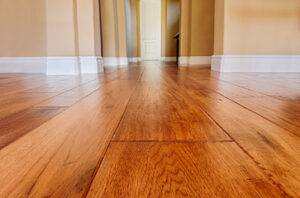Keeping tile and grout clean is key to maintaining the appearance and healthfulness of your home. Whether you have hard-to-reach spots or stubborn stains, there are several cleaning solutions to help.
Some involve ingredients found in your kitchen pantry. For example, Perry recommends a DIY grout cleaner made with baking soda and hydrogen peroxide. Contact Tile And Grout Cleaning El Dorado Hills CA now!

Tile is a beautiful flooring material that adds a clean, stylish look to any home. Its main setback is that it can be difficult to maintain and clean, especially the grout. Regular cleanings can prevent mold and mildew from growing, and keep your floors looking their best. This is why it is important to hire a professional tile and grout cleaner for your cleaning needs.
Before hiring a professional to do your tile and grout cleaning, ask them questions about their experience and methods. You want to find a company that has a history of providing high-quality service and results. It is also important to ask about the types of products they use and what repercussions those chemicals may have on your tile and grout.
It is recommended to get your tile and grout cleaned professionally every 2-3 years. The grout is porous, and it easily collects dirt and germs over time. This can cause a bad smell and lead to the growth of mold and mildew, which can affect your family’s health.
Professional cleaners will have all the tools necessary to clean your tile and grout. They will be able to remove tough stains without damaging the tiles. They also have the knowledge to use different cleaners on different types of tile, so they can avoid using acids or other harsh chemicals that can damage the surface of your tile.
Before a cleaning crew arrives, they will need to move any furniture from the area that is being cleaned. They will also need to remove any rugs, mats, plants, or trash cans that are in the area. This is to ensure that the cleaning process does not disturb any other areas of your home.
When hiring a professional, they will typically sweep the floor before starting. They will then use a special machine to clean the tile and grout. Then, they will use a grout sealing product to protect the newly cleaned tile. This will help extend the life of your tile and grout while preventing future staining. In addition, it will give your home a fresh, spring-like scent that is sure to impress your guests.
Inquire About Their Methods
Tile and grout add style and elegance to your home, but they also gather dirt that deteriorates their beauty over time. Regularly cleaning these surfaces can help prevent build-up, but sometimes scrubbing isn’t enough to eliminate tough stains and spillage marks. When this occurs, you need professional cleaning services that have the tools and cleaners to remove stubborn debris.
When hiring a company to clean your tile and grout, ask them what process they use. They should be able to provide you with a detailed explanation of how they will wash your surfaces so that you can trust their work. This may include starting with an initial inspection to identify troublesome spots and note any areas that need special attention.
They should be able to tell you whether they will use an oxygen bleach powder or another type of cleaner that is safe for your surfaces. Bleach is a common household product that can be used to lighten dark colors, but it is also highly corrosive and can damage grout over time if it comes into contact with it too often. Oxygen bleach powder works similarly to chlorine, but it doesn’t produce noxious fumes or harm surfaces when applied properly.
Another option is to use a steam cleaner that’s compatible with your tile surface. Steamers can make quick work of dirty tile and grout, but it’s important to follow the manufacturer’s directions carefully to avoid overusing the wand or allowing it to remain in contact with your tiles for too long.
In addition to being a great way to keep your home looking its best, cleaning tile and grout regularly helps obstruct the accumulation of bacteria and germs that could damage your health. Dirty tile and grout lines can be breeding grounds for fungus, mold, and other harmful organisms that are linked to chronic illnesses. Hiring a professional who can professionally clean your tile and grout will reduce the amount of bacteria in your home and keep your tiles looking their best. They can also give you helpful tips on how to keep your tile and grout clean between professional cleaning visits.
Ask for References or Reviews
Choosing the right tile cleaning company is crucial to ensure that you get the best possible results. A good way to find out whether or not a company is right for you is to ask for references or reviews from past clients. This will give you a firsthand look at the quality of their work and customer service.
It is also important to find out what type of products they will use in your home. Some cleaners may be using unsafe or toxic chemicals that could damage your tiles and grout. Ask the cleaning company about the types of cleaners they use and be sure to read any online reviews or testimonials.
A thorough clean of your tile and grout can make a huge difference in the appearance of your floors. It can help to reduce the amount of dirt, grime, and bacteria that build up on your tiles over time. This can improve the overall look of your home, as well as helping to prevent potential health problems for you and your family.
While it is possible to do tile and grout cleaning on your own, a professional will have the equipment and experience needed to get the job done quickly and efficiently. They will know how to tackle even the most stubborn stains without damaging your tiles, and they can reach those hard-to-reach places that are often missed during regular household cleaning.
Before hiring a tile and grout cleaning company, be sure to ask for referrals from friends or family members who have used the services before. This is one of the best ways to find a reliable and experienced cleaner that you can trust with your home. Also, be sure to ask about any pricing details and if there are any hidden fees or charges that you should be aware of. Finally, it is important to check the cleaning company’s license and insurance policy before hiring them to do any work at your home. This will ensure that they are insured in case of any accidents or damages during the cleaning process.
Get an Estimate
Tile and grout are a lot harder to clean than most people think, especially since dirt and grime get ground in. A professional cleaner will use a combination of hot water, high pressure rinsing and an abrasive cleaning solution to get the job done right. Your quote will depend on how soiled the tile is and how long it has been since it was last cleaned. It will also depend on the size of your tiles and how many grout lines there are. The more grout lines, the longer it will take to clean them all.
Grout is a mixture of cement, sand and water that fills the space between your tile pieces when they are installed. It is porous and easily absorbs grease, mildew, dirt and spills. This can cause your tile to become dull and discolored. Professional cleaning services use specialized tools to get deep into grout crevices, where dirt and mold can hide. They can also help you keep your grout looking new by applying a sealant after they are finished.
When getting a quote for tile and grout cleaning, make sure you understand how the pricing structure works. Some professionals offer flat fees, while others base their prices on square footage. Some may also charge extra for additional services like hand cleaning or spot cleaning. Some include basic grout color-sealing in their cleaning, while others will charge an additional fee for this service.
If you want your grout to stay as clean as possible, it’s a good idea to vacuum and sweep regularly. Also, be sure to ventilate well during the cleaning process to avoid humidity-induced microbial growth in your grout lines.
Once your grout and tile are clean, it’s important to follow any instructions from the cleaner about how to care for them. For example, you should stay off freshly-cleaned floors for 30 minutes and be careful about returning furniture (with felt pads or rugs) until the floor has completely dried. You should also avoid getting any liquid on the tile or grout for 24 hours afterward.

